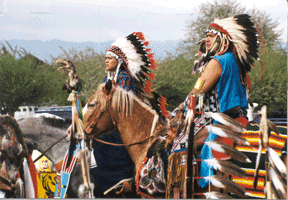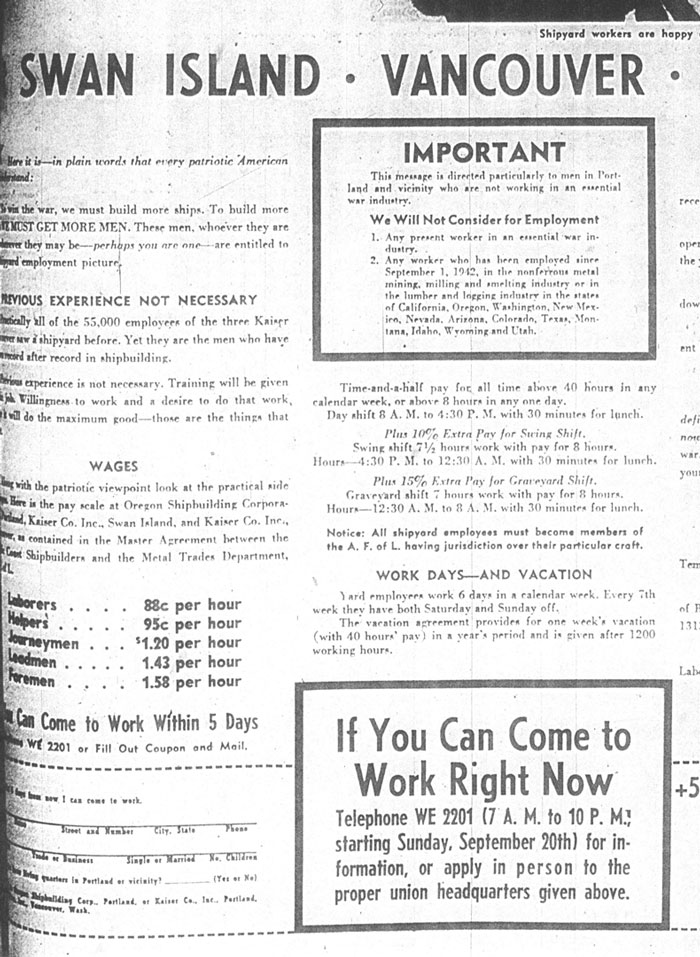
On April 24, 2010 at 10 a.m. Nez Perce tribal members gathered on the parade grounds of the Fort Vancouver National Site to commemorate the anniversary of the release of the Red Heart Band in April of 1878. This annual memorial began in 1998 with a Reconciliation Ceremony to allow members of the Nez Perce tribe to come to terms with a long-remembered injustice of the Nez Perce War. On August 7, 1877, Chief Red Hearts band of men, women, and children were captured by the U.S. military. The band’s 33 members were incarcerated for eight months, finally being allowed to return to their reservation on April 22, 1878.
In May of 1930 Many Wounds, a noted Nez Perce historian and participant in the Nez Perce War, sent a letter to Lucullus McWhorter, historian, author, and friend of the Nez Perce and Yakama. Many Wounds acted as translator for McWhorter, helping him document the history of the Nez Perce. The letter, now held in the Washington State University Special Collections, included a note and a list of names. Many Wounds, who spoke and wrote English, wrote: “My brother Black Eagle give me 23 mens names and seven womens names and four children, all Total 34 in number.” The list of names follows and includes at least two people who were still living. There is at least one signer of the 1855 Walla Walla treaty, old Chief Jacob, “who signed the treaty in 1855.” Others on the list include “old” Chief Red Heart, “Blind old woman Tsa-Cope,” a girl, and a three-year old boy. The unnamed son of Little Bear was the 34th person, a child who died at Vancouver. The brief note, written by Many Wounds, says:
“Black Eagle wants to know if You put down in our History, this People were captured Kamiah this People came back from other-side of Kamiah but they never thought to get capture. This people never fought, but the same summer this came back home to Lapwai, Idaho.”
Like his brother, Many Wounds, Black Eagle lived through the Nez Perce War. And like many Nez Perce, the two men recalled the wrongful incarceration of the Red Heart Band and wanted to document it. McWhorter recorded the story in Yellow Wolf: His Own Story, but no one in Vancouver knew about it by the late 1990s. What the city’s collective memory had forgotten, or perhaps never understood, is that from the mid-1850s until the early 1880s, the U.S. military at Vancouver Barracks served as a regional base for conquest of Native people in the Pacific Northwest.
The U.S. Army arrived in Vancouver in 1849, their job to protect settlers on the Oregon Trail and to facilitate development. This meant removing Native people, a process that took the form of “agreement” through treaties by government officials, with follow-up by force if necessary. A number of treaties were made in 1855 in the Walla Walla Valley, including one with the Nez Perce, who retained seven million acres of their homeland.
The treaty stated that the “exclusive right of taking fish in all the streams running through or bordering said reservation is further secured to said Indians: as also the right of taking fish at all usual and accustomed places in common with citizens of the territory, and of erecting temporary buildings for curing, together with the privilege of hunting, gathering roots and berries, and pasturing their horses and cattle upon open and unclaimed land.”
Not all Native leaders agreed to these treaties, an issue that became increasingly significant in the decades to follow. American settlement increased throughout the 1850s. In the 1860s, gold was discovered east of the mountain and miners quickly overran Native lands. The solution to these land grabs was more treaties and more forced removal. An 1863 “Thief Treaty” with the Nez Perce reduced the size of the reservation from seven million to 700,000 acres. Again, not all leaders agreed. Those who did not became known as the “non-treaty” Nez Perce. In June 1877, General Oliver Otis Howard ordered the non-treaty Nez Perce to the reservation. When they refused, Howard gave them a 30-day deadline for “voluntary” relocation. Meanwhile, the same month a handful of young Native men killed some white ranchers, out of anger and vengeance for a relative’s death in 1874. General Howard quickly dispatched the military to bring in the non-treaty Indians, and for three months and 1,300 miles the army chased the non-treaty groups which first fled to Montana and then attempted to reach Canada.
This is the fray into which Chief Red Heart’s Band stepped as they returned from buffalo hunting in Montana in early August, 1877. According to the Nez Perce, they were unaware of these unfolding events and were on their way to the reservation. It was this injustice that Black Eagle wanted to record.
The Red Heart story is one that has resonated in Vancouver for the past 12 years. But it is not the only such story. Many Native people were unjustly incarcerated in Vancouver. During the 1850s, Vancouver’s army fought with Native people throughout the region. In the 1860s, as thousands of miners, merchants, settlers, gamblers, and others headed west volunteer armies built protective forts, determined to quell Native resistance. They also mapped thousands of square miles, identified water sources, and opened the way for further American expansion.
Throughout the 1870s, conflict continued. In 1872, soldiers from Vancouver fought in the Modoc War. The result was bloodshed and removal. Like the Nez Perce a few years later, resisters were sent to “Indian Country,” now Oklahoma. From 1877 to 1881 other Indians, some resistant and others unlucky, were incarcerated in Vancouver. Skimiah, the Wishram dreamer-prophet, who advocated traditional ways of life, was captive in the spring of 1877. In 1878, the Army brought eleven Bannocks to the barracks, with 31 following in 1879. In 1880, the barracks held 51 Indian prisoners. The census for that year lists the names of 17 adult male Indian prisoners, seventeen adult females and 16 unnamed minors, with the qualification for all that “ages and other statistics are not obtainable.” Many other names have been lost over time. Some will be recovered, most will not.
Every year, the Nez Perce generously provide a reminder of the power of forgiveness, bringing their horses and their families to Vancouver in a spirit of friendship and goodwill. The memorial begins at 10 a.m. All are welcome.
[The 2011 memorial will be held on April 23].This article was published in the April 16, 2010 issue of the Vancouver Voice
